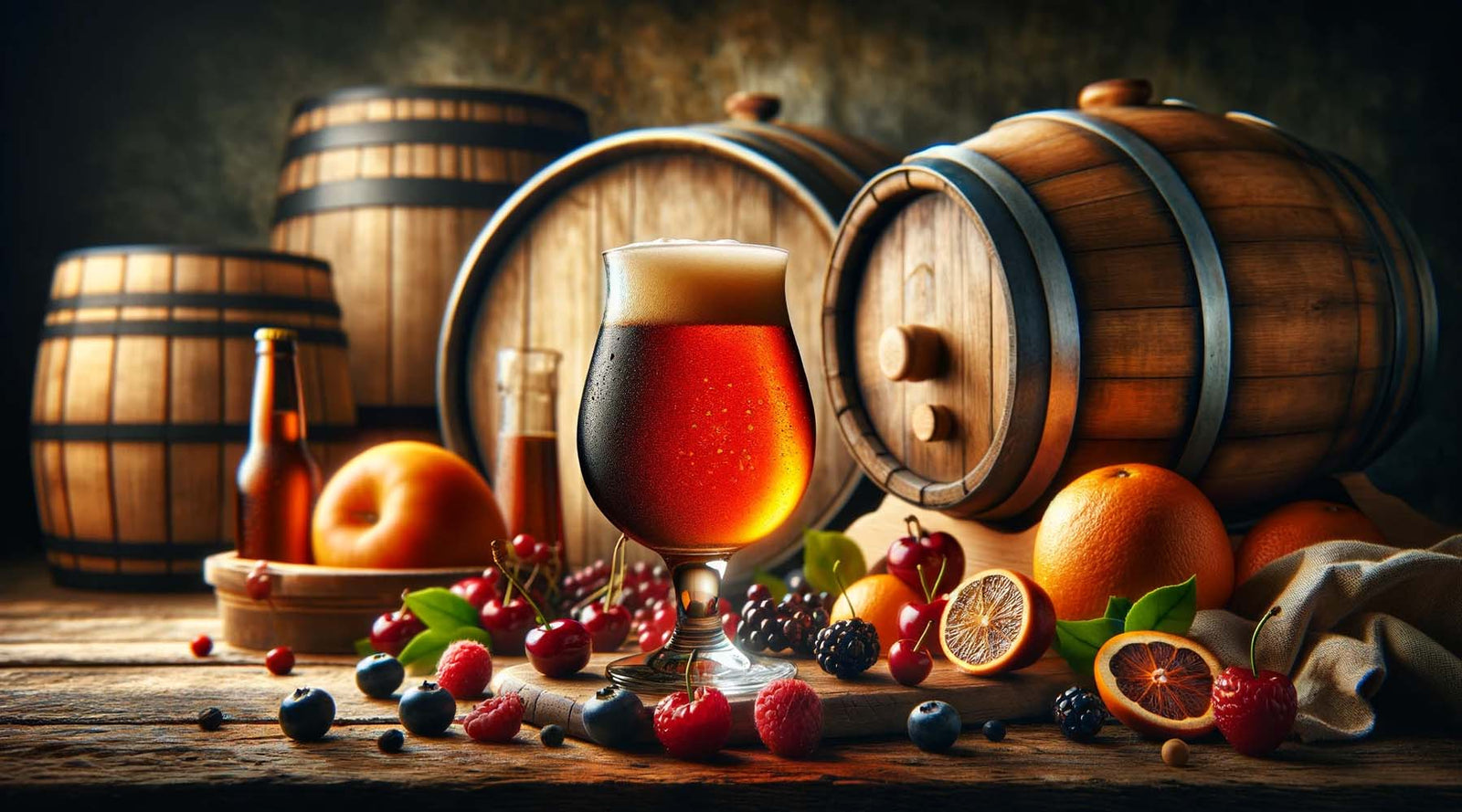
Cold-Side Flavour Infusions in Craft Brewing: A Comprehensive Guide to Fruit Additions
December 23, 2023 3 min read
Cold-Side Flavour Infusions in Craft Brewing: A Comprehensive Guide to Fruit Additions
Introduction
In the evolving world of craft brewing, embracing the cold side of the process opens up a myriad of flavor possibilities. While I've traditionally been a purist, somewhat skeptical about fruit infusions, my explorations have led me to acknowledge the rich complexity they can bring. This comprehensive guide delves into the art of adding fruit flavors to beer, balancing the traditional brewing ethos with modern craft innovations.
Expanding the Palette with Fruit Additions
Fresh Fruit Complexity
Using fresh fruits in brewing was a step outside my comfort zone. The process, involving careful mashing and pasteurization, is critical. Fresh fruits can complement a beer’s inherent flavors when used judiciously. For a standard batch, I've found that using between 3 to 7 pounds of fresh fruit strikes the right balance.
Frozen Fruit Benefits
Initially, I was hesitant to use frozen fruit, but its practicality is hard to ignore. Freezing aids in breaking down cell walls, leading to more efficient flavor release. This option strikes a balance between convenience and rich flavor infusion, especially when using fruit that's just fruit, without preservatives or added sugars.
Fruit Purees – An Effective Alternative
Fruit purees, already pasteurized and prepared, offer a consistent and reliable flavor profile. Adding purees to either the primary or secondary fermenter allows for control over flavor intensity. In my experience, adding purees to the primary fermenter when the gravity drops to around 1.020, or towards the end of the initial fermentation, yields excellent results.
Fruit Extracts – Controlled Flavoring
Fruit extracts have proven to be a controlled way to introduce fruit flavors. For instance, with LorAnn Super Flavorings, I've found that using up to 1 dram per 5-6 gallons and adding it during secondary fermentation allows for a subtle yet distinct fruit character. Silver Cloud flavoring, at a starting dosage of 0.15% to 0.3% per batch, is another avenue for nuanced flavoring.
Concentrates and Dried Flavorings
Fruit concentrates and dried flavorings offer a reliable way to introduce consistent fruit flavors. For example, 18 grams of crystallized citrus flavoring dissolved in water and added to the bottling bucket can impart a zesty character to a 5-gallon batch. With natural extract flavorings, I usually start with 2 ounces per 5 gallons, stirring and tasting, then adjusting as necessary.
Barrel Aging and Wood Infusions – A New Perspective
Exploring Wood Varieties
Experimenting with different wood types like cherry wood and hickory has opened my eyes to the varied flavors they can impart, adding layers of complexity to the beer.
The Science of Barrel Aging
The interaction between beer and barrel, considering factors such as the barrel's history and aging duration, has been a fascinating aspect to explore. Understanding this dynamic has been key to utilizing barrel aging effectively.
Wood Alternatives – Practical Solutions
For small-scale experiments or limited space scenarios, wood chips, cubes, or spirals are practical for achieving barrel-like aging effects. They offer a faster infusion of wood character due to their increased surface area.
Nitrogenation – Crafting Silky Textures
Techniques and Considerations
Learning to nitrogenate beer has been an intriguing journey. This technique changes the beer's texture, creating a smoother, creamier mouthfeel that can be particularly delightful in stouts and porters.
Conclusion
My journey in craft brewing has been one of continuous learning and adaptation. Integrating fruit flavors, a concept I was initially reserved about, has opened up a new realm of possibilities in brewing. This guide reflects a blend of traditional brewing principles and innovative techniques, showing how thoughtful fruit additions can create complex, flavorful beers. It highlights the evolving nature of craft brewing, where embracing new ideas can lead to exceptional and unique brews.
ELEVATE YOUR BREWING EXPERIENCE WITH BRÄU SUPPLY
Ready to enhance your brewing experience with top-of-the-line equipment? Look no further than Bräu Supply, the pioneers of the all-in-one brew system, the Unibräu. Our commitment to quality is unmatched, with every product crafted from premium 304 stainless steel and designed with modularity and electric brewing in mind.
Explore our range of products, including the Unibräu, Unibräu Pro, and HERMS systems, all offering unparalleled efficiency and value. With Unitank fermenters and a vast selection of accessories, we ensure you have everything you need for a perfect brew. Don't settle for less—check out our products and discover the Bräu Supply difference!
More Articles on Fermentation
https://brausupply.ca/blogs/news/mastering-the-cold-side-of-brewing-a-comprehensive-guide
https://brausupply.com/blogs/news/what-causes-a-fermenter-to-heat-up
https://brausupply.com/blogs/news/what-is-the-basic-function-of-the-fermenter
Subscribe
Sign up to get the latest on sales, new releases and more …


